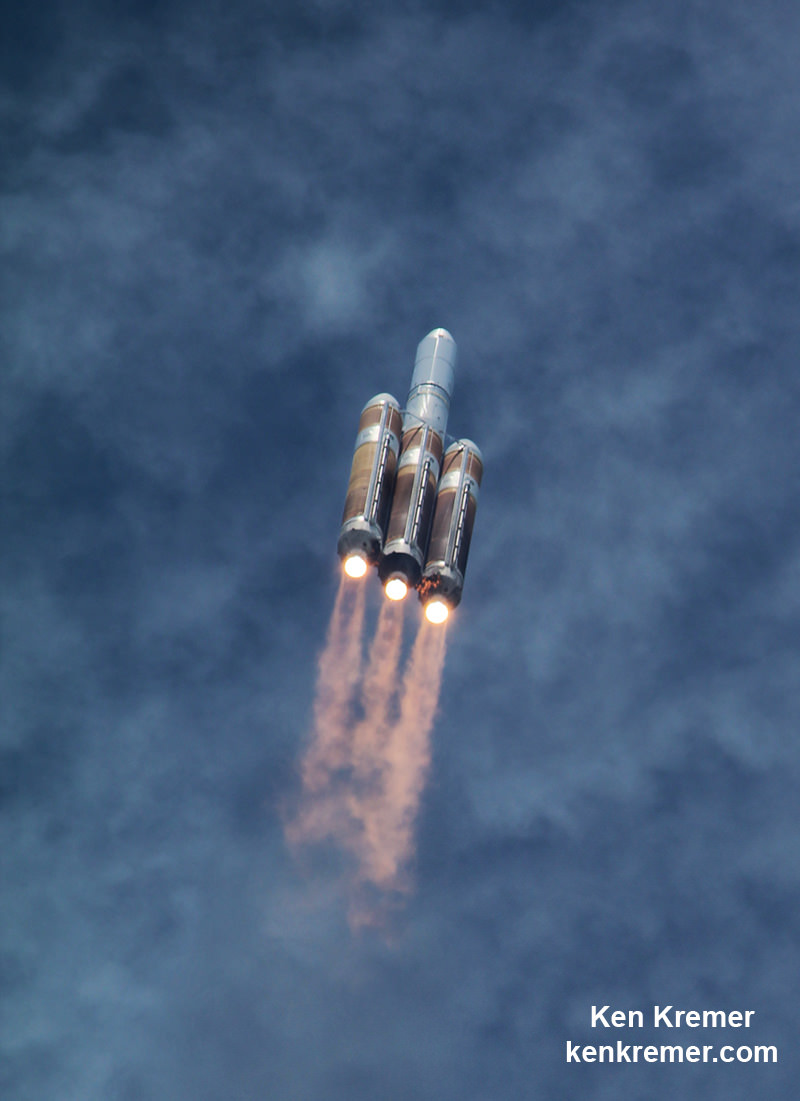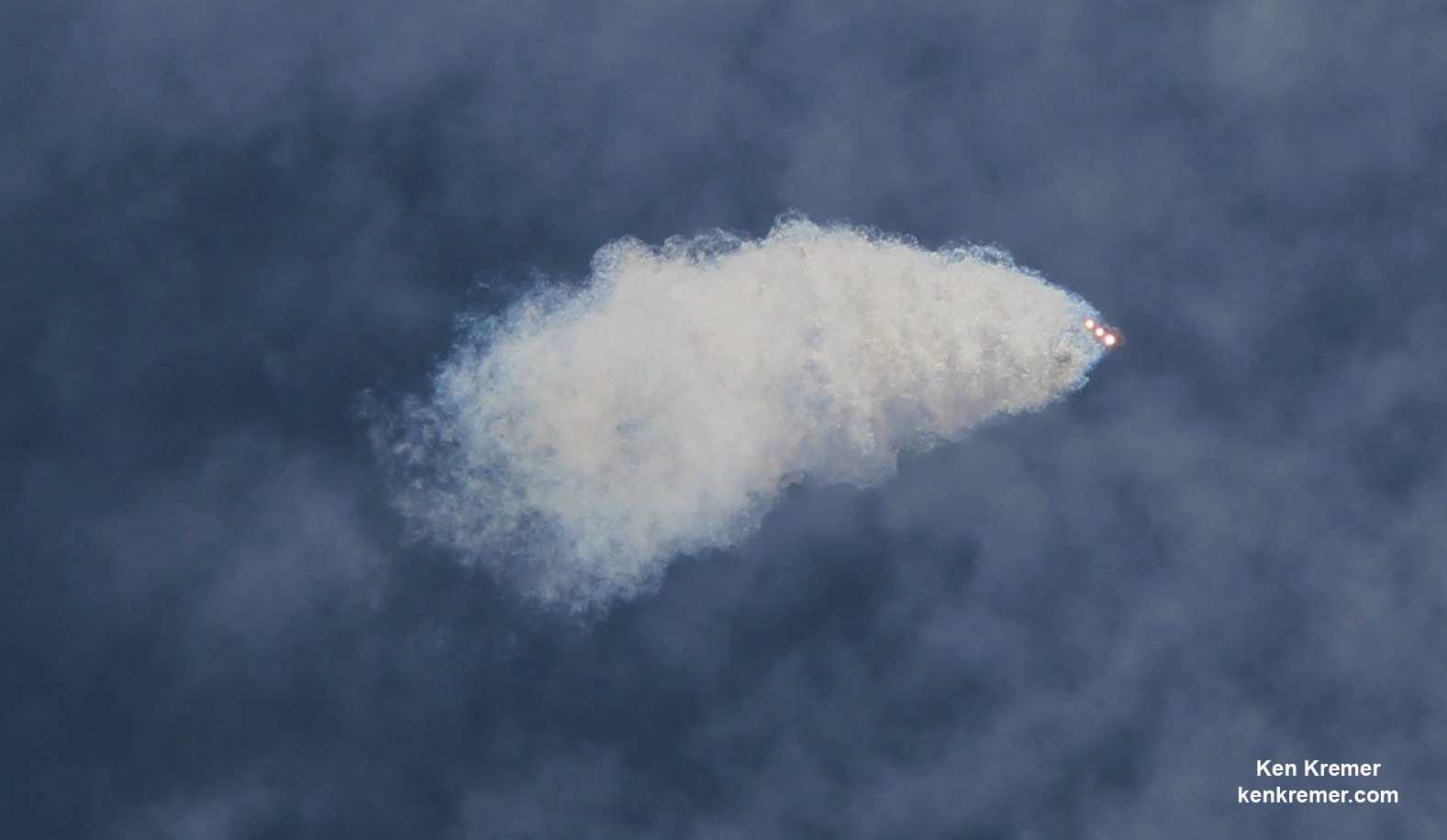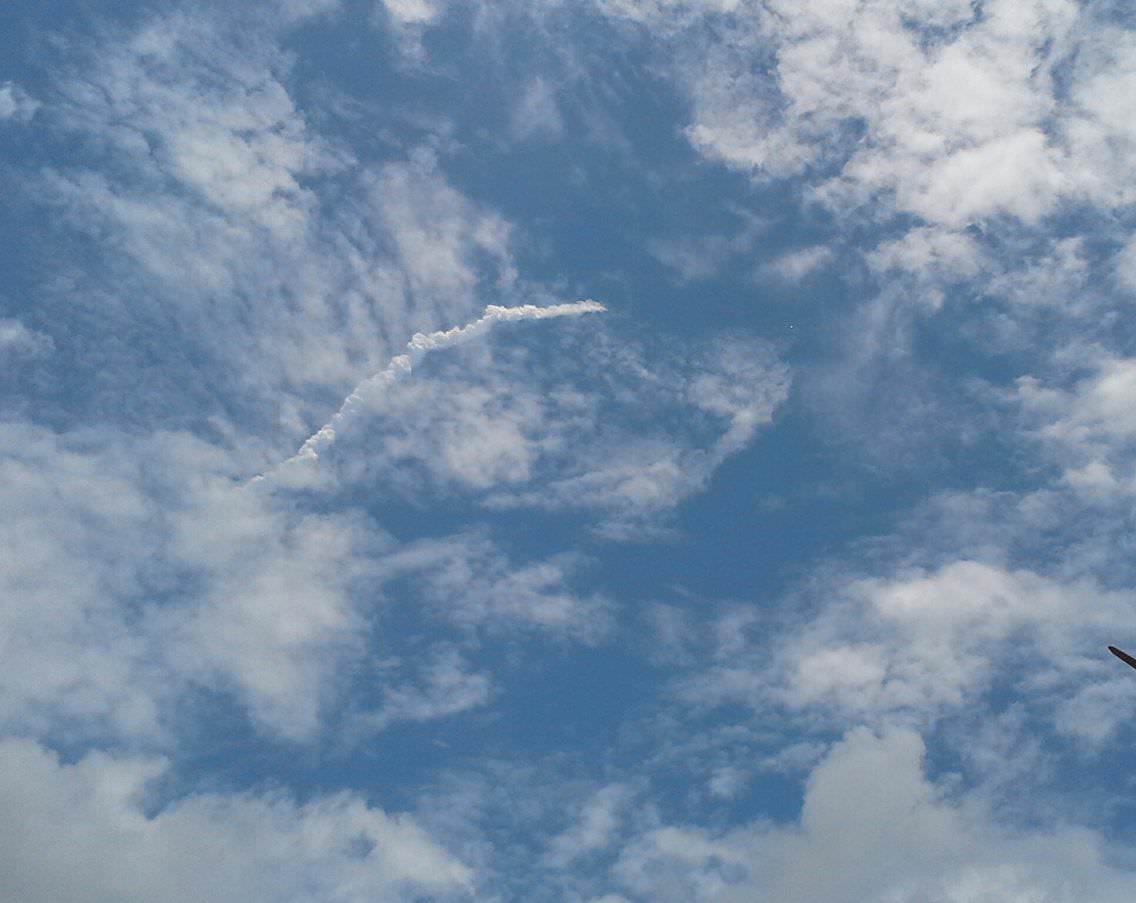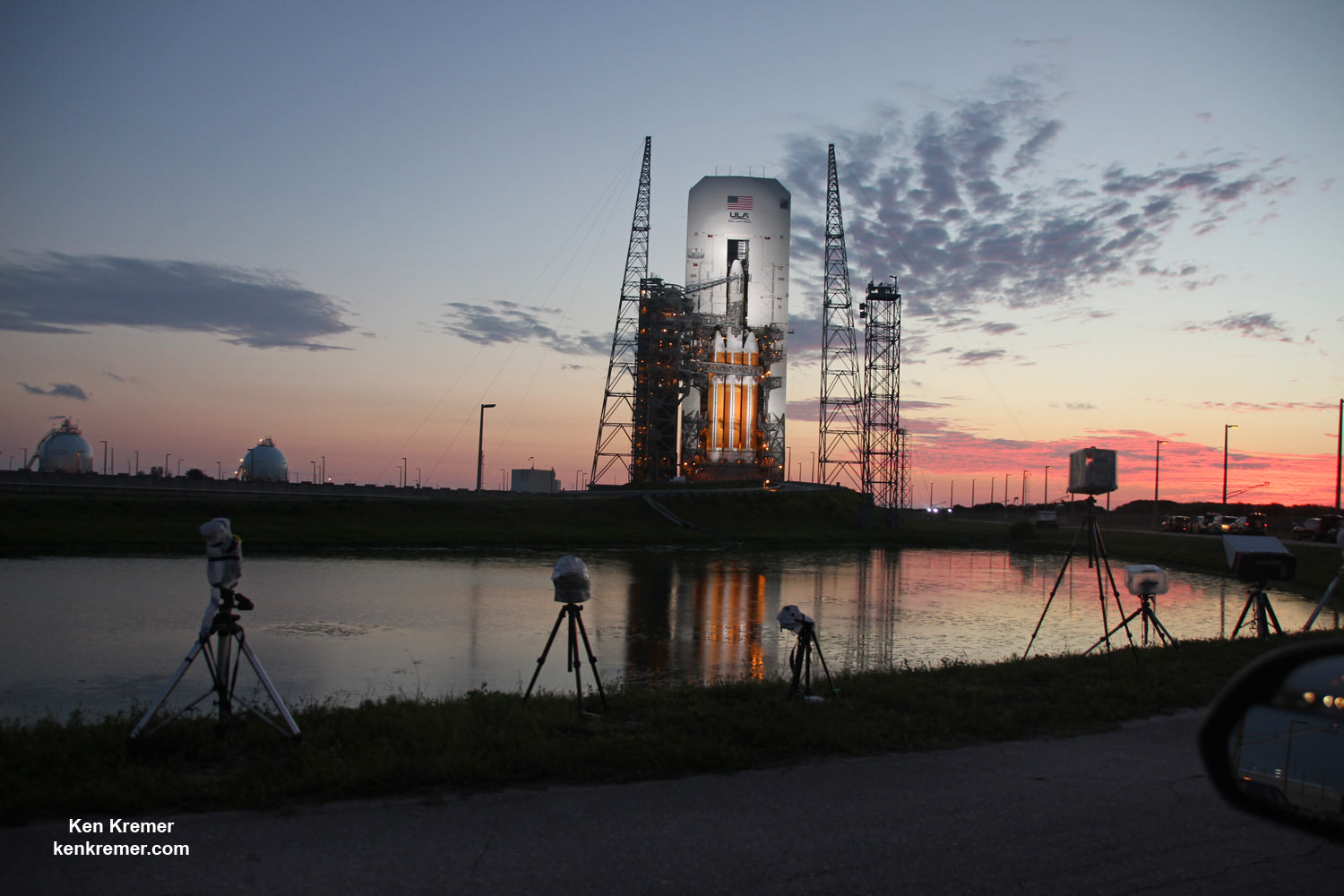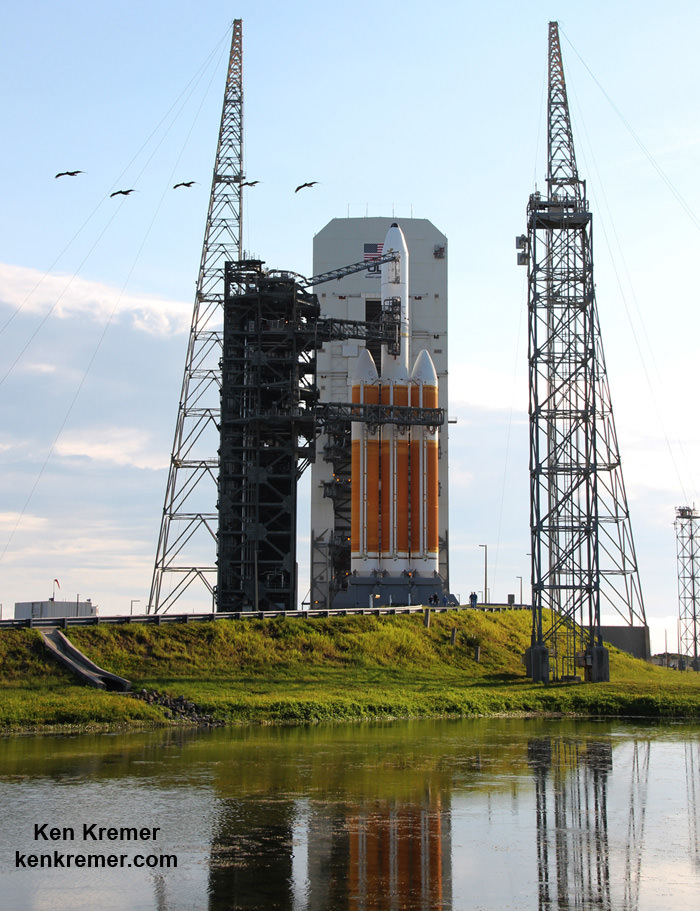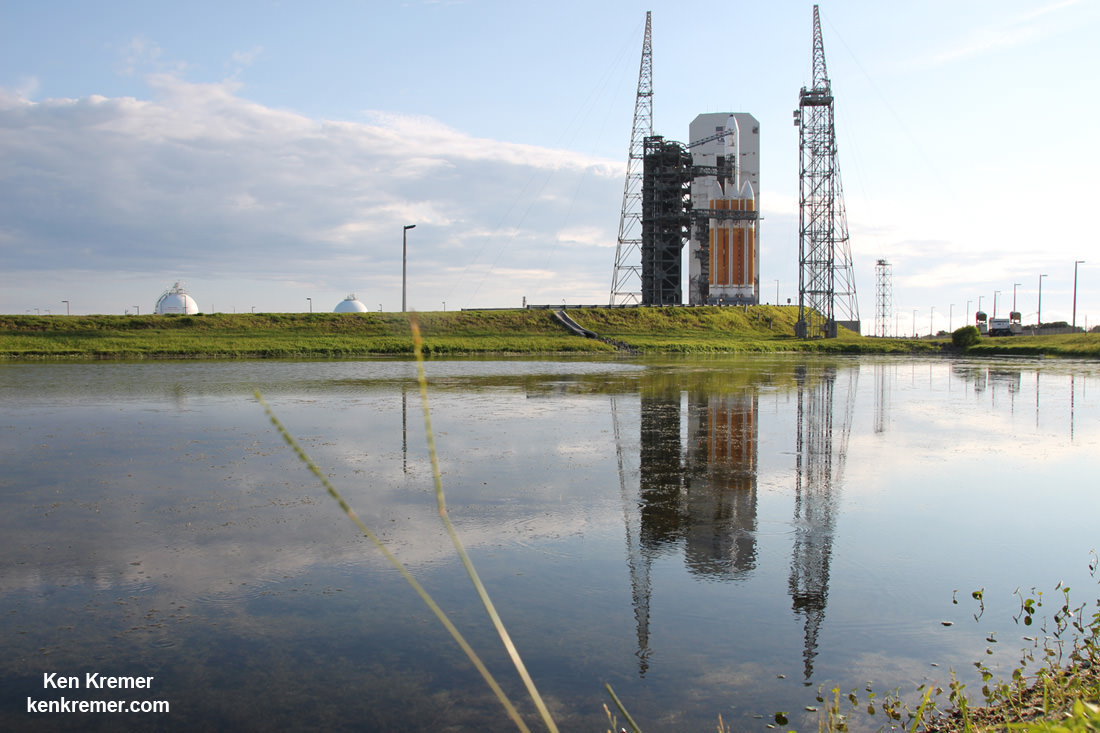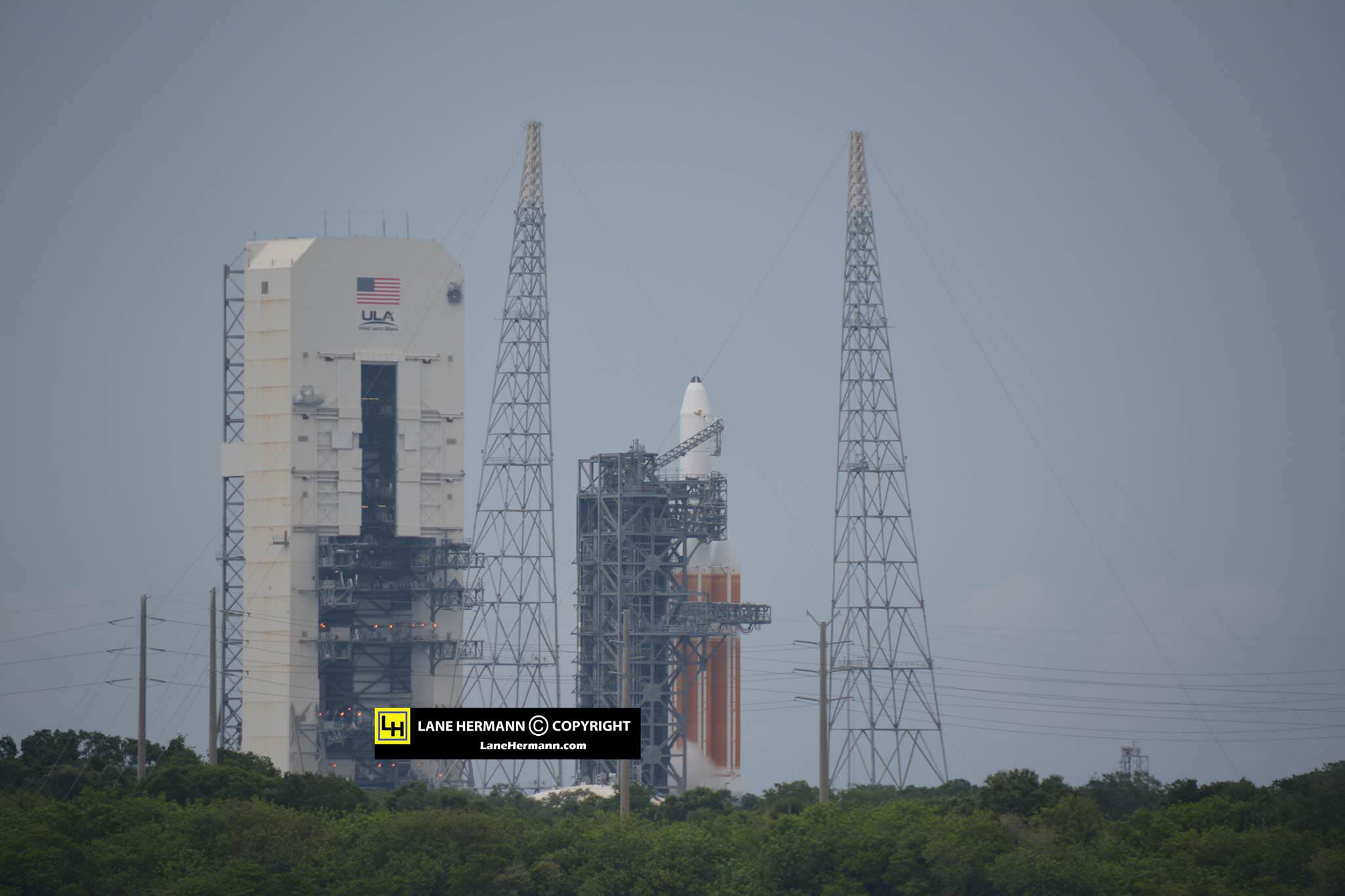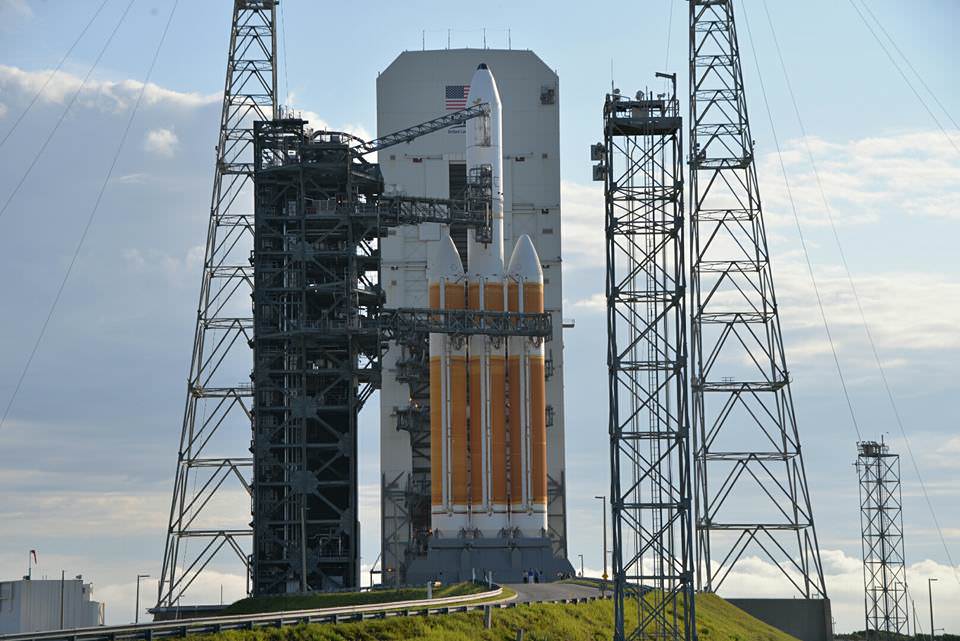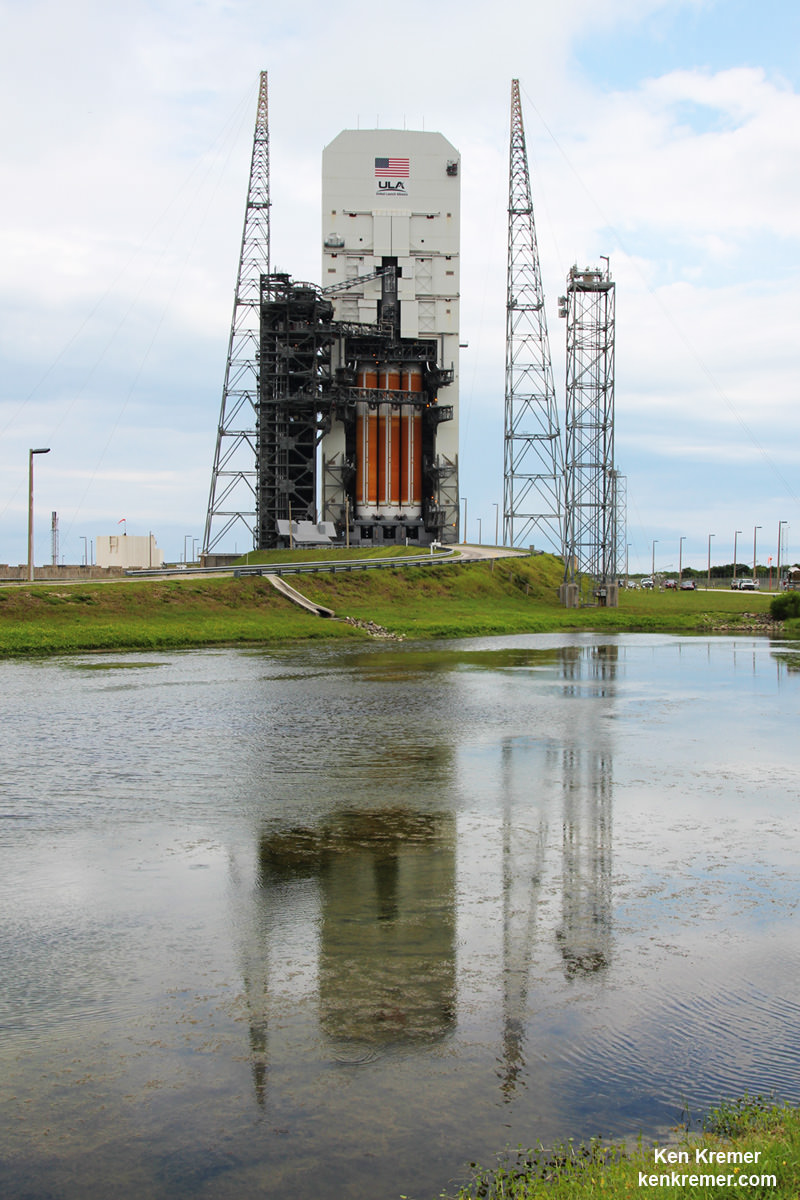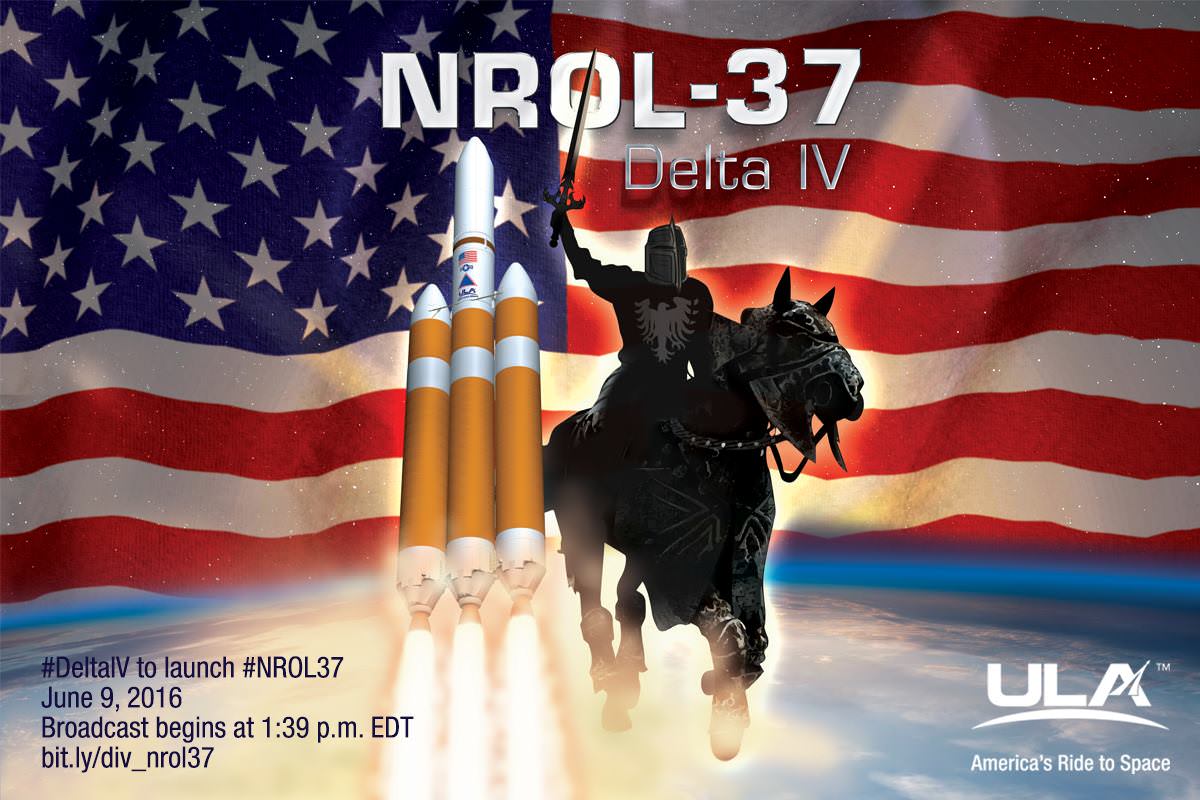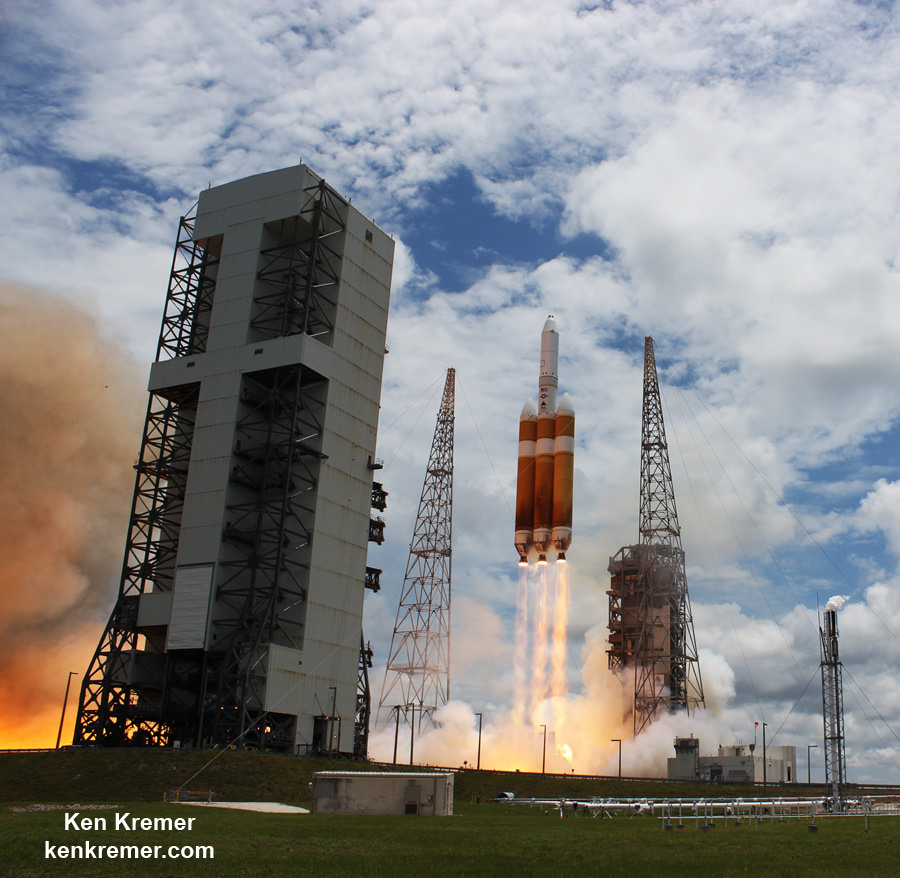
CAPE CANAVERAL AIR FORCE STATION, FL — A top secret eavesdropping satellite constructed to support America’s national defense plowed a dazzling path to orbit Saturday riding atop the immense firepower of the mightiest rocket in the world – the triple barreled Delta IV Heavy powerhouse.
Note: Story expanding with more photos/videos !!
A United Launch Alliance (ULA) Delta IV Heavy rocket carrying a classified payload for the National Reconnaissance Office (NRO) soared to space under mostly sunny sunshine state skies from Space Launch Complex-37 on Cape Canaveral Air Force Station, Fla., on June 11 at 1:51 p.m. EDT.
Although the actual launch time was classified, liftoff of the 24 story tall monster rocket came right at the opening of the publicly announced launch window – on its ninth mission overall.
The clandestine surveillance satellite with the nondescript name NROL-37 blazed to space on over two million pounds of liftoff thrust – putting on a stunning display of one of the biggest and baddest launches in many years from the Florida Space Coast.
“We are so honored to deliver the NROL-37 payload to orbit for the National Reconnaissance Office during today’s incredible launch,” said Laura Maginnis, ULA vice president of Custom Services, in a statement.
“This was the ninth time ULA launched the Delta IV Heavy, the most powerful launch vehicle in existence today.”
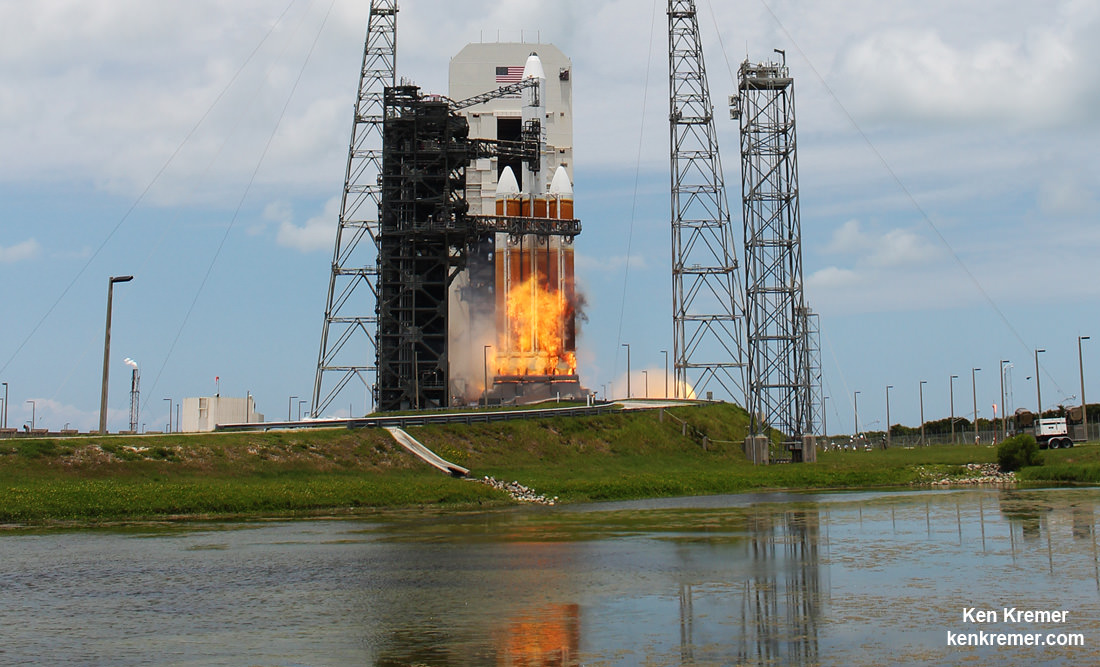
To the eyes and ears of myself and many space journalist friends it was among the very the best and loudest blastoffs since the retirement of NASA’s space shuttle orbiter fleet back it 2011.
Spectators ringing the beaches and packing the hotels along the Atlantic Ocean shore and beyond could hear the engines roar reverberating for more than 5 minutes, even after it disappeared far far way in the distant clouds.
Spectators east of the Cape and watching from more than 20 miles away told me they hear the rockets roar and feel the rumbling in their houses and apartments even after it disappeared from sight.
The 235-foot-tall rocket arced over eastwards towards the African continent on its path skywards, providing clues to its intended orbit.
Although a preplanned communications blackout was instituted by ULA and the US military some five minutes after liftoff, it is believed that the Delta IV Heavy successfully delivered NROL-37 to a geostationary orbit and an altitude of approximately 22,300 miles.
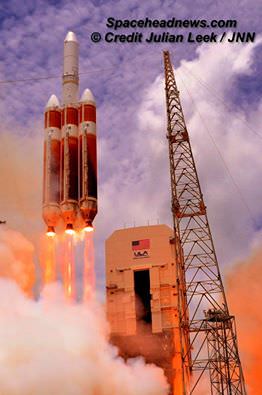
Saturdays successful liftoff came 48 hours after gloomy weather related to Tropical Storm Colin in the so called ‘sunshine state’ forced a postponement for the mammoth satellite valued at over $1.5 Billion.
“The team worked together through many challenges this flow including, overcoming the aftereffects of Tropical Storm Colin,” said Maginnis.
“We are proud of the outstanding teamwork between the ULA, NRO and Air Force partners to ensure mission success for this critical national security asset.”
The most powerful rocket in existence today was required for this launch since the immense payload reportedly weighs in excess of 17,000 pounds.
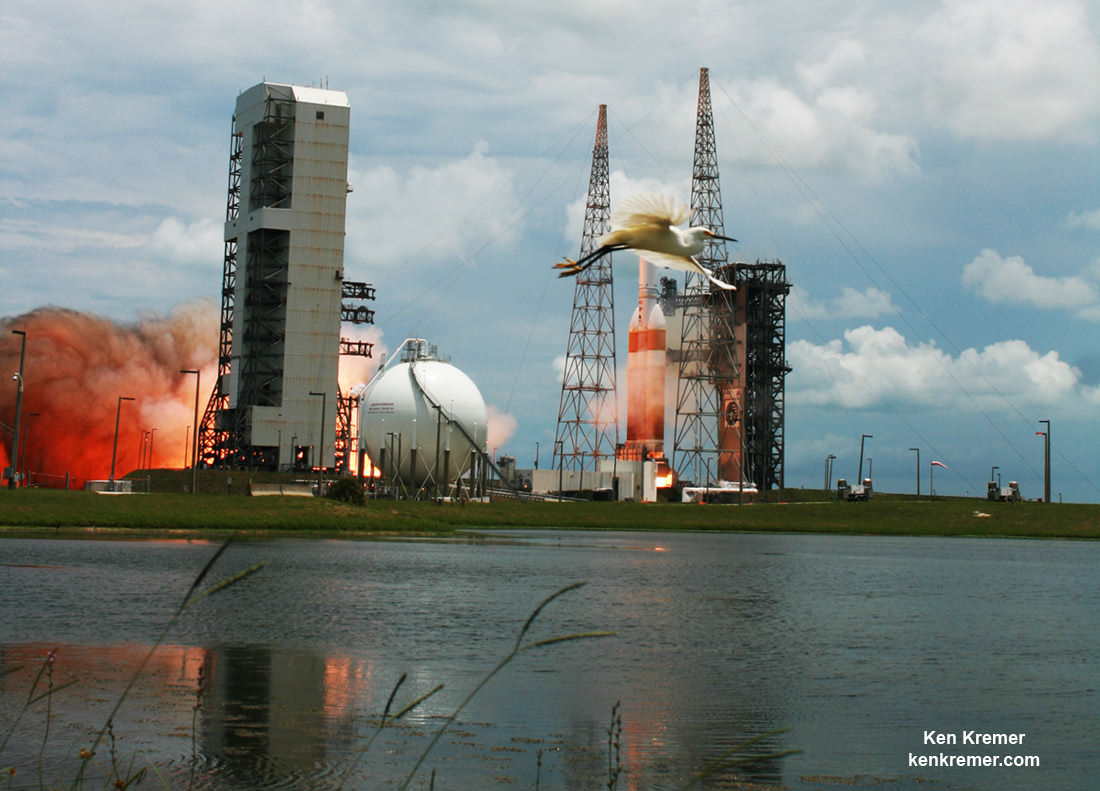
NROL-37 is being launched for the NRO on an intelligence gathering mission in support of US national defense.
The possible roles for the reconnaissance payload include signals intelligence, eavesdropping, imaging and spectroscopic observations, early missile warnings and much more.
Reports indicate it may be one of the largest satellites ever launched, weigh some 17,000 pounds and may deploy an antenna over 300 feet wide for eavesdropping purposes.
The NRO was formed in response to the Soviet launch of Sputnik and secretly created on September 6, 1961.
“The purpose is overseeing all satellite and overflight reconnaissance projects whether overt or covert. The existence of the organization is no longer classified today, but we’re still pressing to perform the functions necessary to keep American citizens safe,” according to the official NRO website.
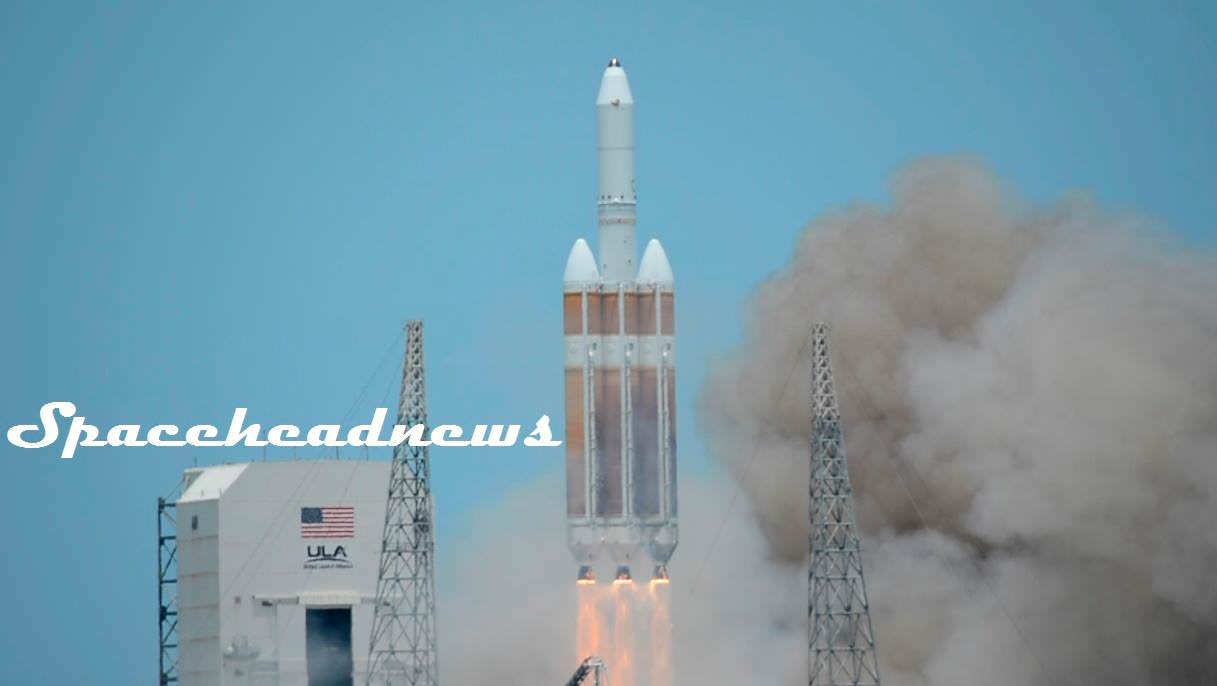
Witnessing a Delta IV Heavy rumble to orbit is a rather rare treat since they launch infrequently.
The last of these to launch from the Cape was for NASA’s inaugural test flight of the Orion crew capsule on the EFT-1 launch in Dec. 5, 2014. No other rocket was powerful enough.
Watch these spectacular launch videos from remote video cameras set at the pad:
Video Caption: NROL-37 launch on ULA Delta IV Heavy from the front pond camera location at CCAFS on June 11, 2016. Credit: Jeff Seibert
The Delta IV Heavy employs three Common Core Boosters (CBCs). Two serve as strap-on liquid rocket boosters (LRBs) to augment the first-stage CBC and 5-m-diameter payload fairing housing the payload.
Each first stage CBC is powered by an upgraded RS-68A engine generating 702,000 pounds of thrust.
The three CBCs generate a combined 2.1 million pounds of thrust fueled by cryogenic liquid oxygen and liquid hydrogen.
A single RL10 liquid hydrogen/liquid oxygen engine powers the Delta second stage.
The secret satellite was enclosed in a 5 meter diameter payload fairing.
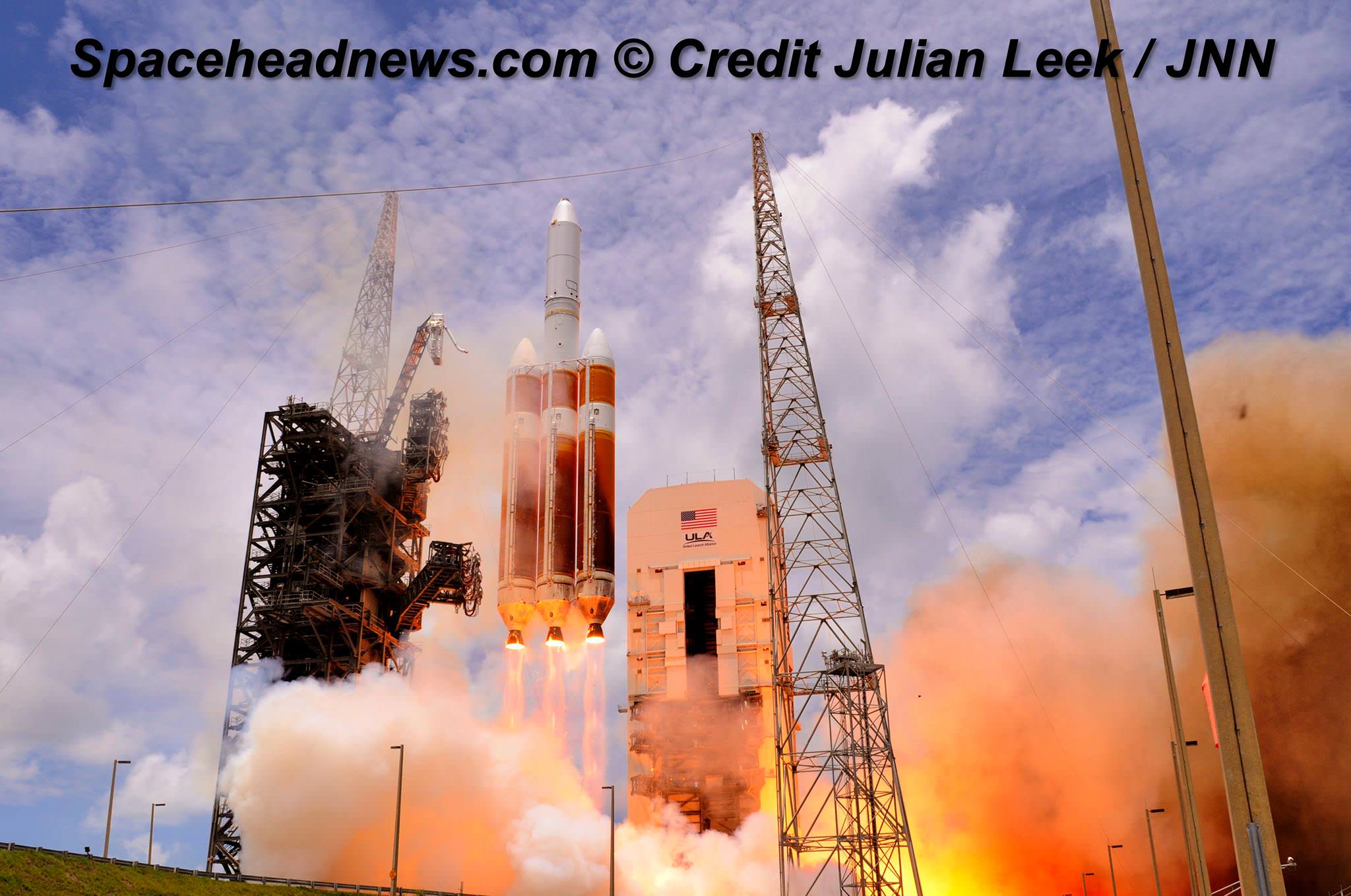
ULA manufactures the Delta rocket family in Decatur, Alabama. Aerojet Rocketdyne builds the booster and upper stage engines.
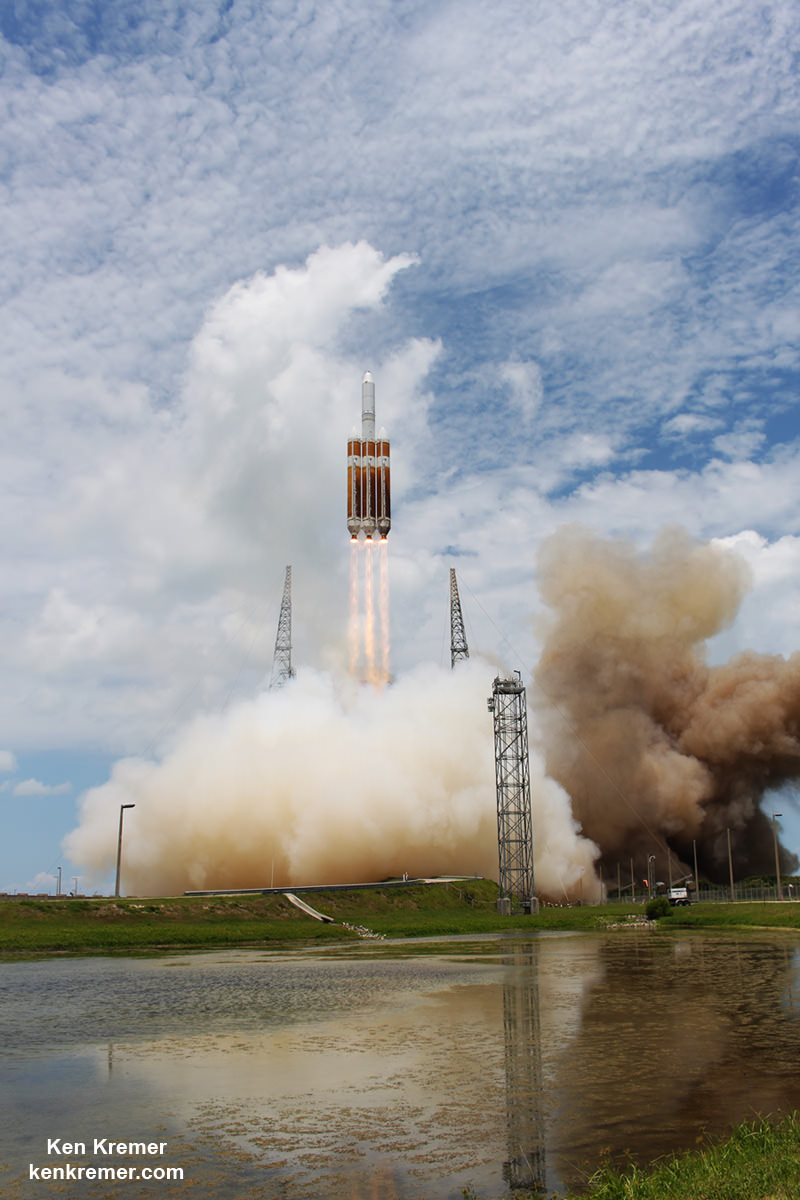
Watch for Ken’s continuing on site reports direct from Cape Canaveral Air Force Station and the SpaceX launch pad.
Stay tuned here for Ken’s continuing Earth and planetary science and human spaceflight news.
………….
Learn more about ULA Atlas and Delta rockets, SpaceX Falcon 9 rocket, Orbital ATK Cygnus, ISS, Boeing, Space Taxis, Mars rovers, Orion, SLS, Antares, NASA missions and more at Ken’s upcoming outreach events:
June 14/15: “ULA Delta 4 Heavy spy satellite, SpaceX, SLS, Orion, Commercial crew, Curiosity explores Mars, Pluto and more,” Kennedy Space Center Quality Inn, Titusville, FL, evenings
